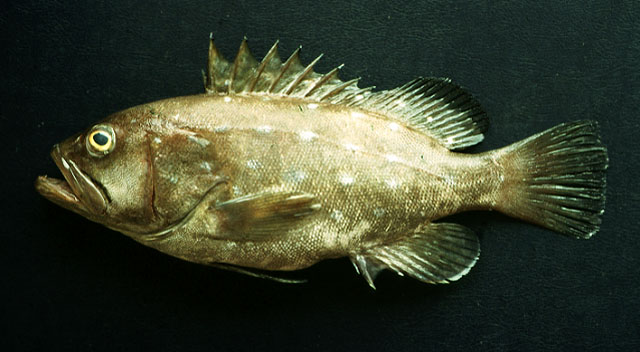|
Hyporthodus niphobles (Gilbert & Starks, 1897) Star-studded grouper |

|
|
photo by
Jimenez Prado, P. |
| Family: | Epinephelidae (Groupers) | |||
| Max. size: | 48 cm SL (male/unsexed) | |||
| Environment: | demersal; marine; depth range 50 - 130 m | |||
| Distribution: | Eastern Pacific: southern California to Peru. Misidentified as Epinephelus niveatus by some authors (Ref. 5995, 6852). | |||
| Diagnosis: | Dorsal spines (total): 11-11; Dorsal soft rays (total): 13-15; Anal spines: 3-3; Anal soft rays: 9-9. Distinguished by the following characteristics: juveniles dark reddish brown with white spots in grid-like pattern of vertical series and horizontal rows on body and dorsal fin; caudal peduncle with visible dark saddle blotch; pale caudal and pectoral fins; dark brown anal and pelvic fins; black maxillary groove; adults dark brown lacking white spots; depth of body contained 2.3-2.7 times in SL; head length 2.2-2.5 times in SL; convex interorbital area; slightly produced angle of preopercle, with enlarged serrae; distinctly convex upper edge of operculum; vertically elongate posterior nostrils, 2-5 times larger than anterior nostrils; maxilla reaches to or beyond vertical at rear edge of eye; 2 rows of teeth on midlateral part of lower jaw (Ref. 89707). | |||
| Biology: | Found on rocky reefs and soft bottoms (Ref. 89707). Reported to be often caught in shrimp trawls in central Gulf of California. Too rare to be of commercial interest. | |||
| IUCN Red List Status: | Least Concern (LC); Date assessed: 20 November 2016 Ref. (130435) | |||
| Threat to humans: | harmless | |||